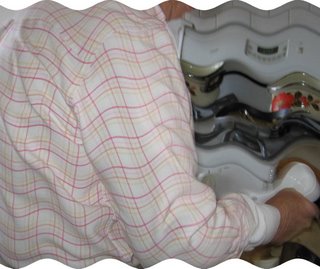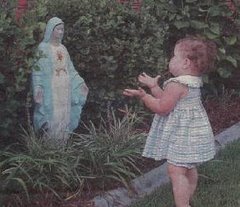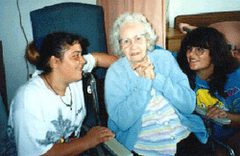- --Preface
- --Chapter 1--Modernism
- --Chapter 2--Vatican II
- --Chapter 3--Running Backwards
- --Chapter 4--Pope John Paul II
- --Chapter 5--The Wind Changes
- --Chapter 6--New Growth
- --Chapter 7--Residual Trials
- --Chapter 8--Conclusions
In the proposed larger story, a particle accelerator is used in 2018 to attempt to answer two scientific questions on (1) the missing spin of the quarks, and (2) the absence of free quarks. A young scientist notes during the pre-collision process that tiny sugar ants have gotten into the 3-story tall particle detector system.
He watches a line of sugar ants move slowly across the detector surface when one ant suddenly moves sideways as if moved by a unseen force. A minute or two later, a second and a third ant are also observed to move sideways, in the same direction and distance as the first ant.
The physicist is working under a countdown scenario and is asked if his detectors are ready to proceed with the experiment. The physicist quickly uses a compressed air jet to clean the detector surfaces and the particle collision experiment begins. Three collisions occur at approximate one minute intervals. The expected spin is too low and represents only 30 percent of the expected energy/mass.
The physicist hypothesizes the missing particle spin could be found about ten minutes BEFORE the experiment. He concludes the missing spin is associated with a new particle that appears before the experiment is conducted, is very large, and decays within milliseconds. After verification experiments with salt crystals (instead of ants), the “before” particle is named the “Sugar Ant Particle."
The young physicist and his team are awarded the Nobel prize for physics in 2028. Further tests and development of a new mathematical model and corroborative experiments show that the emitted location and particle force can be controlled.
The priest-author of the “Great Catholic Retreat” argues in 2100 to an academic audience that if Anatole Bugnini had not been in charge of the NO Mass following Vatican II, that the Church would have been spared a significant decline. Moreover, avoiding a decline would have enabled the Church to have countered the great expansion of Islam in the 21st century.
Rehistory is based on use of the Sugar Ant particle to change a physical phenomenon or environment in the past. The goal of rehistory is to change a prior event (1) with minimum effort, (2) to obtain maximum desired result, and (3) to limit any unwanted effects.
In chaos theory, changing something big with something small is called the lever effect or the Butterfly effect, where a butterfly wing flapping in a Chinese field can create air currents that grow and produce storms in the U.S. Once a butterfly flaps its wing, Arturian-Markovian statistics can be used to project successive happenings.
The priest-historian agrees to serve as a senior consultant for a rehistory event to prevent the Great Catholic Retreat of the late 20th century. Based on the sugar ant particle phenomenon, he presses forward to use rehistory to reveal Bugnini as a Mason at a much earlier date--before he damages the old Latin Mass.
Almost ten years go into the planning for the rehistory event, because the effort requires a complex Rehistory Impact Study (RIS, similar to an Environmental Impact Study). The rules include:
1. No injury can be done to persons (as simulated in the RIS)
2. Simulations must ‘prove’ rehistory will affect only target situation
3. A preferred way of dealing with miscreants is to ‘promote’ them out of the way
4. Simulation must show easy reversibility at a later time
5. Form of government cannot be changed
6. Form of religion cannot be changed
The ten-year planning effort is intense, but is plagued with unexpected difficulties as the project leader deals with:
1. Feasibility analysis
2. Simulations
3. Iterations
4. Final Plan
The Senior project engineer for rehistory is Shekel (actually Sheik Al, a secret Muslim) whose own idea of rehistory is to revise a small event before 1492 and so prevent Isabella and Ferdinand from winning the last battle of the Christians against the Moors. Shekel hides his intent by arguing that the best rehistory event would be to change something in an earlier time period so that the western hemisphere would have a long history of Catholic militancy to counter Islam.
You can imagine the rest of the story....
Now for why the story won't be written, please see the next post.









No comments:
Post a Comment